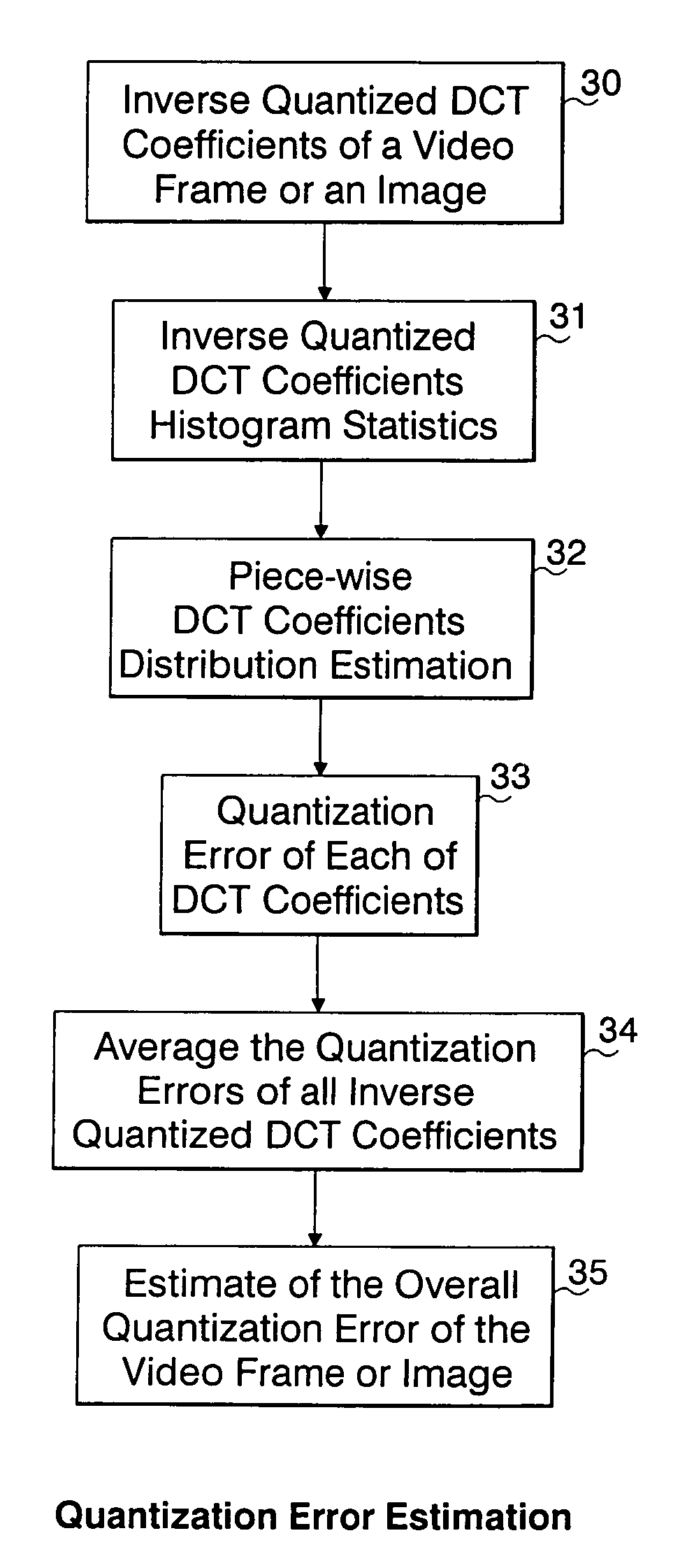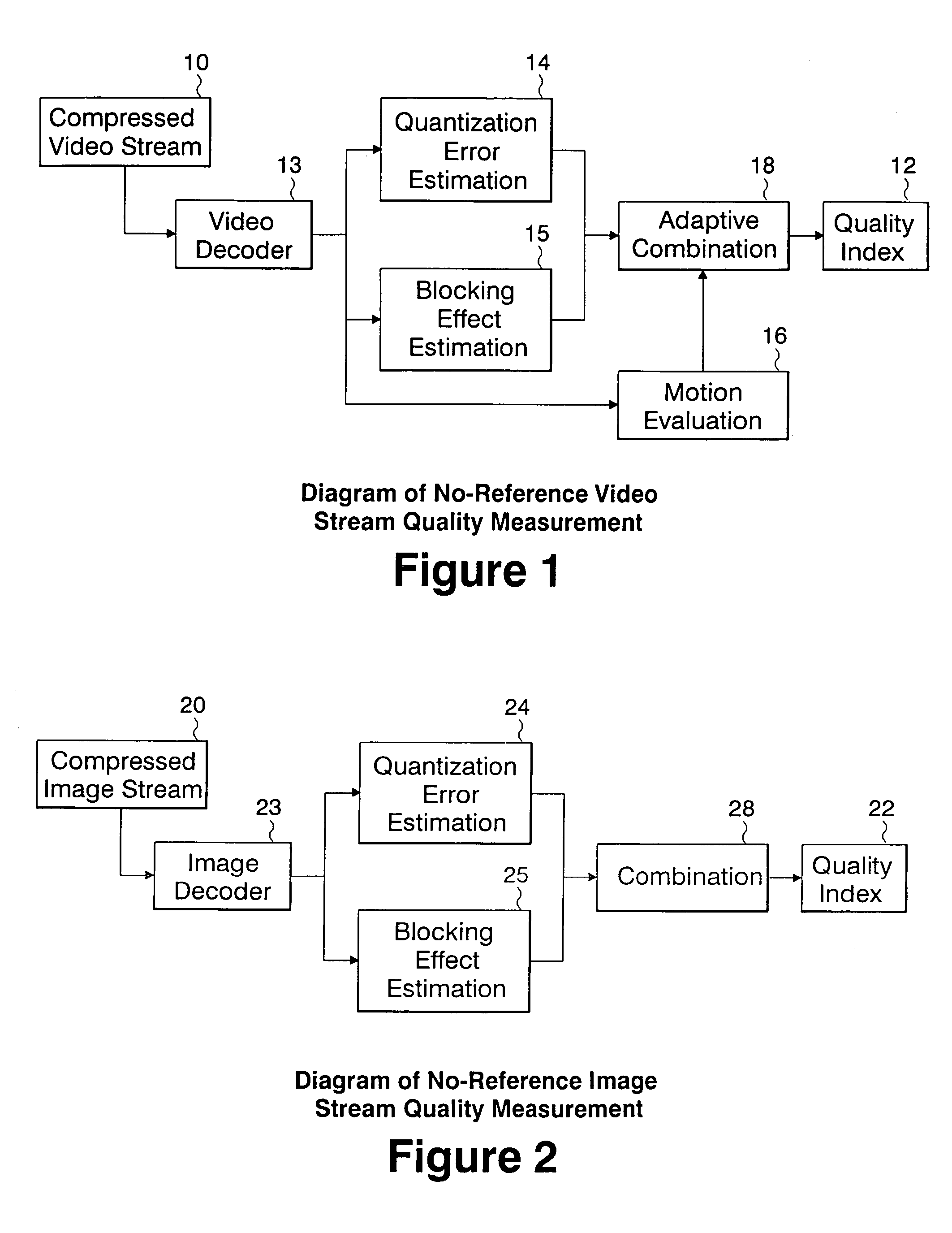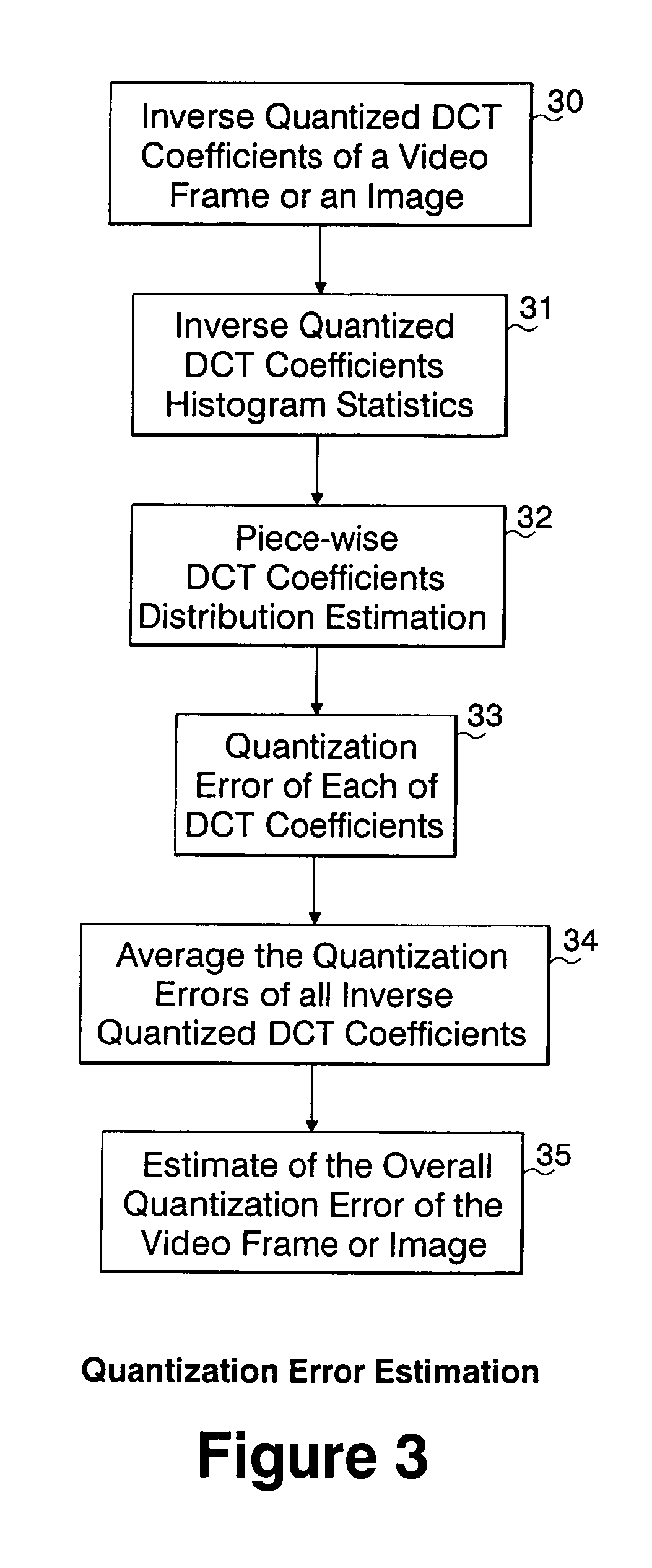Method and system for objective quality assessment of image and video streams
a technology applied in the field of objective quality assessment of image and video stream, can solve the problems of not being able to find reference sources in practical network image and video communication applications, not being able to predict visual quality, and being widely criticized for not correlating well with perceived video quality. , to achieve the effect of assessing picture visual quality and predicting visual quality
- Summary
- Abstract
- Description
- Claims
- Application Information
AI Technical Summary
Benefits of technology
Problems solved by technology
Method used
Image
Examples
Embodiment Construction
[0018]FIG. 1 is a high level block diagram of the method of the present invention for a no-reference quality measurement of a compressed video stream, such as an MPEG video stream or other DCT based compressed video streams such as H.261, H.263 and H.264 standard coded video streams. The input to the system is simply a compressed video bitstream 10. No reference sequence is needed. The output quality index value 12 can be evaluated and reported on either a frame basis or a sequence basic, depending on the application.
[0019]First, the input compressed video bitstream 10 is partially decoded by a video decoder 13 (such as an MPEG decoder for an MPEG video bitstream) to obtain (1) the inverse quantized DCT coefficients, (2) the quantization scale and (3) the motion vector for each block.
[0020]Second, the quantization error (which is the error due to quantization of values, e.g. a 3.2 value on a scale of 0 to 10 is quantized to a 3.0 value) is estimated at 14. If the probability distrib...
PUM
 Login to View More
Login to View More Abstract
Description
Claims
Application Information
 Login to View More
Login to View More - R&D
- Intellectual Property
- Life Sciences
- Materials
- Tech Scout
- Unparalleled Data Quality
- Higher Quality Content
- 60% Fewer Hallucinations
Browse by: Latest US Patents, China's latest patents, Technical Efficacy Thesaurus, Application Domain, Technology Topic, Popular Technical Reports.
© 2025 PatSnap. All rights reserved.Legal|Privacy policy|Modern Slavery Act Transparency Statement|Sitemap|About US| Contact US: help@patsnap.com



